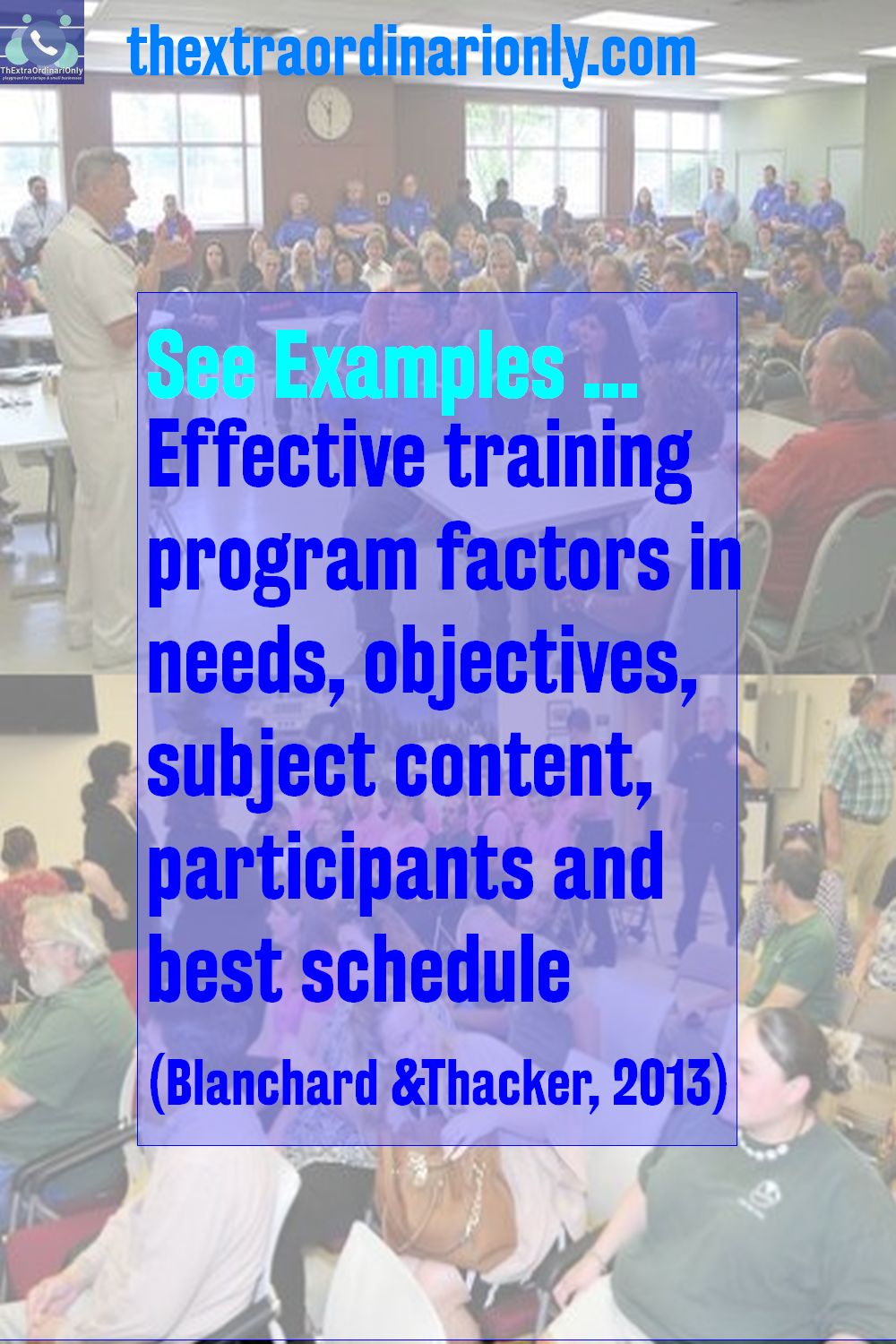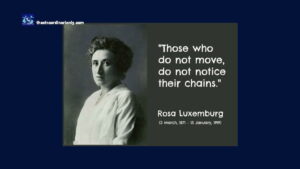Super Simple and Well-Designed Terrific Training Program Example: Practical and Easy Session For A Small Company
Maximum results in an organization are a result of a well-designed training program. Training needs analysis identifies priority gaps and requirements in relation to the expertise and experience of employees.

Inhouse training program
A well-executed training program results in the overall productivity of an organization. Employees perform better with additional knowledge, skills, and attitudes.
We cover the tremendous training program prerequisite to move the company in the right direction.
The beautiful thing about learning is that nobody can take it away from you. B.B King
Topics for Training Plan for a Group of Twenty (20) Employees for
The following topics get addressed in how to build a training program:
- The design of a two (2) day training program
- Training needs and the approach used to meet these requirements
- The training objective
- Training costs
- Training methods used to deliver the training program
Two (2) Day
Kirkpatrick & Kirkpatrick (2016) states the purpose of training programs for employees in an organization.
In this case, let us use this example of top-tier business executives and professionals training program.
1. Day ONE
Day one (1) of the training focuses on the performance improvement of participants.

Other key indicators include customer service, exceeding clients’ expectations, and understanding emotional intelligence, effective listening, and dealing with irate customers. The quality assurance director is the primary facilitator and special guest during the two (2) day training program for the organization to realize its goals.
The other guests are an instructor and an actor.
2. Day TWO
Day two (2) key focus is training activities that help the team of twenty (20) employees out-perform their tasks with sufficient learning characteristics.
Team building, improving morale, and understanding the enhanced attendance policy top the agenda of the second day. At the end of the training program, an evaluation through questionnaires is carried out (Phillips & Phillips, 2015).
Identify two to three (2-3) training needs through Training Needs Analysis (TNA)

The most realistic training program should factor in the needs, objectives, subject content, participants and the best schedule (Blanchard &Thacker, 2013).
Let’s use on the job training programs. A survey of the twenty (20) staff, bosses, and others who are familiar with the job and how the performance, including subordinates, peers, and customers is carried out. A simple survey gets developed to provide information about the needs as they see them.
The topic to be considered answers the question of how employees’ morale and performance can improve with the ultimate goal to exceed customers’ expectations. The resulting list becomes the survey form. All participants are asked to complete the personal and professional skills audit survey by putting a check in on each topic so that the responses can be quantified.
A tabulation of the resultant responses with the sum weights gives a score for each subject.
Easy-peasy, right?
Justification of the Training Needs Analysis (TNA) approach
An advisory committee that represents different departments and levels within the organization justifies the final decision (Kirkpatrick & Kirkpatrick, 2016). Consequently, the committee helps to;
- Determine subject content for training programs
- Inform board members of the efforts of the training department to provide practical guidance
- Provide empathy regarding the needs seen by their subordinates, and
- Stimulate support of the programs by involving them in the planning.
The priority training needs for the program get better and improves employee performance and morale, effective listening, and effectively exceeds customer expectations.
Put it to Test
Tests and inventories are used to determine training requirements by the identification of the knowledge, skills, and attitudes that a supervisor should have and develop the subject content. A test that measures the knowledge, skills, and attitudes, is designed and given to participants as a pretest. After that, the subject content results get analyzed.
Another approach purchases a standardized instrument, for example, the sixty-five-item instrument titled ‘management inventory on managing change’ discussed by Kirkpatrick &Kirkpatrick (2016).
“Develop success from failures. Discouragement and failure are two of the surest stepping stones to success.”
– Dale Carnegie
Develop the training objectives for the training program based on an analysis of the business

The 2-day training program guides the achievement of the goals of the organization within a financial year.
Firstly, all the participants’ background, training, demographics, educational level, overall attitude, routine job tasks, workflow, and expectations are stipulated clearly.
Secondly, the development of objectives targeting performance and morale champions, listening skills and knowledge of customer expectations proceeds.
Silberman & Biech (2015) points out the following: The participants subsequently present the organization’s goal to the rest of the staff for improved performance and morale of employees, development of effective listening skills, emotional intelligence, dealing with irate customers, and implementation of the attendance policy. All changes get evaluated quarterly within the financial year.
ThExtraordinariOnly training new employees program example
How do you onboard, orient, and train new business executives?
ThExtraordinariOnly Training New Employees from HazloEmmaLove, share, and download ThExtraordinariOnly Slide Share of Training New Employees
Download ThExtraordinariOnly training program for onboarding new employees to read offline.
Determine the training cost for the training program you are proposing.
Include a detailed breakdown of time allotted for each piece, the subsequent cost analysis, and the total cost for the project as a whole.
Direct costs include accommodation, facilitators’ fees, training allowances, food, and beverages. The indirect costs cover the need assessments, facilitators’ preparation, and administrative training. The participant compensation and the evaluation cost must be included to determine the total cost (Blanchard & Thacker, 2013).
The table below shows the direct and indirect costs to deliver the training program.
| Expense | Rate (EUR) | Duration | Price (EUR) |
| Transport | 2 trips fuel, flights, bookings, planning, moving equipment @ 15,580/trip | 4 days | 31,160 |
| Accommodation | 4 star hotel (20 participants and 3 facilitators) @ 1,295pp | 2 nights | 59,570 |
| Conference room (free WIFI, free parking) | Course handouts (lump sum) | 2 days | 13,700 |
| Stationery | Lump sum @ 13,370 | 2 days | |
| Company laptops | 0 | 0 | |
| Company projectors | 0 | 0 | |
| Drinking water | Lump sum @ 20,700 | 2 days | |
| Meals | Breakfast, 2 tea breaks, 2 meals (lunch hour and dinner) @ 975/day for 23pax plus pre packs for day of arrival and day of departure | 2 days | 44,850 |
| Training fee (team building) | Facilitators fee for three paxcx @ 6,370/day | 2 days | 38,220 |
| Training allowance | Lump sum @ 175,000 for 20 Pax | 2 days | |
| Sub Total (EUR) | 396,570 | ||
|---|---|---|---|
| Miscellaneous | Including content ownership, merch like branded T-shirt, caps, etc. (11.5 % of total cost) | Lumpsum | 45,606 |
| Total (EUR) | 442,176 |
Source: ThExtraordinariOnly 2-day training program planning and budgeting
Select key training method(s) to deliver the program to employees, such as an e-Learning module or a one-day face-to-face training program

The training incorporates different training methods.
Alnemary et al. (2015) point out the use of visual training to include written instructions, diagrams, handouts, overheads, videos, and other visual information. Audiovisual aids the facilitator to maintain interest and to communicate.
Likewise, all participants are expected to respond to the facilitators, audio-conferences, discussion groups, and Q & A sessions. In addition to the above, they handle a short e-learning module program, drill, practice, and simulation of an application (McCutcheon et al., 2015).
Group vs individual training
Group and individual demonstrations of new procedures are participatory. The group discussions center on case studies.
Team building exercises and training are held outdoors for the restoration of team morale.
Face to face training, presentations, and teamwork

During the first day, the facilitators incorporate face to face training, presentations, and teamwork. These are theoretical concepts that do not allow interaction between the facilitator and participants, as pointed out by Milhem et al., 2014.
However, the trainers involve the audience by constantly posing questions to them. On the second day, the same methods dominate. The trainees get allowed to demonstrate their skills through discussions and later present the results in front of the other team.
Eventually, the participants have an interactive program with a high rate of retention of the facts.
What is the best training program, planning, and budgeting for a higher ROI?
The only thing worse than training your employees and having them leave is not training them and having them stay.
Henry Ford
Create an agenda of training activities for the training program

Establishing a comprehensive training schedule allows one to plan and organize the training events, so they run smoothly. The audience is defined, in addition to the facilitators’ time frame, learning objectives and topics. As discussed by Blanchard &Thacker, 2013, this way, the training program fulfills the purpose.
Typical training agendas include managing change, negotiating effectively, making decisions and solving problems for organizations and professionals. The agenda has an introduction, ice-breaker activity, lecture, exercise, a test, and evaluation. The plan may also specify breaks and assignments.
Time plans
Time becomes allocated to allow participants the opportunity to practice analyzing a situation, preparing a plan, implementing actions, overcoming obstacles and objections, and monitoring progress. Of importance are self-assessment activities that help participants determine their current ability to frame problems effectively so that they come up with solutions.

During the subsequent training-agenda sessions, participants learn how to recognize and gather information about issues to determine assumptions.
The table below shows the training program for two (2) days.
Talk to us in advance to plan for educational, skills-based training programs to help your employees perform their every-day job duties better. Obtain ThExtraordinariOnly designed thriving training program for your organization.
| Example of Day One (1) | ||
| Day/Time | Session | Duration |
| 8.30 – 9.30 | Introduction: Opening remarks, the introduction of participants and facilitators, ground rules, expectations, goals, and objectives for the course, logistics, and pre-course assessment. | 1 hr |
| 9.30 – 10.05 | Defining performance, morale; exercise | 35 min |
| 10.05 – 10.15 | Q & A | 10 min |
| 10.15 – 10.30 | Tea break | 15 min |
| 10.30 –11.15 | Group work: effective listening skills | 40 min |
| 11.15 – 11.45 | Case study: emotional intelligence | 30 min |
| 11.45 – 12.50 | E- module: customer service | 55 min |
| 12.50 – 1.00 | Q & A | 10 min |
| 1.00 – 2.00 | Lunch break | 1 hr |
| 2.00 – 2.10 | Warm-up | 10 min |
| 2.10 – 3.10 | Dealing with irate customers | 1 hr |
| 3.10 – 3.25 | Q & A | 10 |
| 3.25 – 3.40 | Tea break | 15 min |
| 3.40 – 4.40 | Team building and mentoring skills: transferring skills; coaching the staff | 1 hr min |
| 4.40 – 4.50 | Overview and reflection; e-module evaluation test of the day | 10 min |
| 4.50 – 5.00 | Q & A Reflection and homework | 10 min |
| Day Two (2) Sample | ||
| 8.30 – 8.45 | Review of day one (1) homework | 15 min |
| 8.45 – 9.30 | Case study: attendance policy | 45 min |
| 9.30 – 10.20 | E-module: exceeding customer expectations | 50 min |
| 10.20 – 10.30 | Q & A | 10 min |
| 10.30 – 10.45 | Tea break | 15 min |
| 10.45 – 11.45 | Working effectively with staff: stages of group development, characteristics of effective groups, and building the team | 1 hr |
| 11.45 – 12.15 | Group work: Leadership and leadership styles | 30 min |
| 12. 15 – 12.50 | Building leadership skills: recognition, motivation, work climate, tips for leading staff | 45 min |
| 12.50 – 1.00 | Q & A | 15 min |
| 1.00 – 2.00 | Lunch break | 1 hr |
| 2.00 – 2.10 | Warm-up | 10 min |
| 2. 10 – 2.55 | Team building and mentoring skills: types of feedback; giving/receiving constructive feedback | 45 min |
| 2. 55 – 3.25 | Developing morale and performance champions | 30 min |
| 3. 25 – 3.40 | Tea break | 15 min |
| 3. 40 – 4. 40 | Overview and reflection; e-module evaluation test of the day | 1 hr |
| 4.40 – 4. 50 | Q & A | 10 min |
| 4. 50 – 5.00 | Closing ceremony, awarding of certificates |
Source: ThExtraordinariOnly 2-day training program
What else have we left out of this training program preparation sample?
Contribute by adding a comment using the comments section below.
References
- Alnemary, F. M., Wallace, M., Symon, J. B., & Barry, L. M. (2015). Using international video conferencing to provide staff training on functional behavioral assessment. Behavioral Interventions, 30(1), 73-86.
- Blanchard, P. N., & Thacker, J. W. (2013). Effective training: Systems, strategies, and practices (5th ed.). Upper Saddle River, NJ: Prentice-Hall – Pearson.
- Kirkpatrick, J. D., & Kirkpatrick, W. K. (2016). Kirkpatrick’s four levels of training evaluation. Association for Talent Development.
- McCutcheon, K., Lohan, M., Traynor, M., & Martin, D. (2015). A systematic review evaluating the impact of online or blended learning vs. face‐to‐face learning of clinical skills in undergraduate nurse education. Journal of advanced nursing, 71(2), 255-270. S https://www.ncbi.nlm.nih.gov/pubmed/25134985
- Milhem, W., Abushamsieh, K., & Pérez Aróstegui, M. N. (2014). Training Strategies, Theories, and Types. Journal of Accounting, Business & Management, 21(1).
- Phillips, J. J., & Phillips, P. P. (2016). Handbook of training evaluation and measurement methods. Routledge.
- Silberman, M. L., & Biech, E. (2015). Active training: A handbook of techniques, designs, case examples, and tips. John Wiley & Sons.
Can we help?
Hit us up for a data-backed training approach.
Let us develop your fit training program together.
Work with us to jump frog your business.
Let’s get social
Since we are ranked in the Top 100 small blogs and websites to follow on the Internet, subscribe to ThExtraordinariOnly Bloglovin‘ mailing list and receive members-only exclusive tips, That way, you’ll never miss ThExtraordinariOnly inspiring updates, ideas, and knowledge.
Buy the books, plus the tools and resources recommended by us. As an Amazon Associate, ThExtraordinariOnly earns from qualifying purchases.
Follow us on Twitter, Pinterest, Vimeo, Facebook, Instagram, and YouTube.
- ThExtraordinariOnly Twitter page
- Pin with ThExtraordinariOnly on Pinterest
- Join ThExtraordinariOnly on Gab
- Follow ThExtraordinariOnly Vimeo handle
- Connect at ThExtraordinariOnly Facebook page
- Love ThExtraordinariOnly Instagram posts
- Link with ThExtraordinariOnly YouTube handle
***We would like to note that this post and most posts on our blog may contain affiliate links. This means that if you purchase something that has an affiliate link, we will get a commission from it. Not all items recommended on our site are affiliate links. We only recommend items that we have used and tried. These items have brought us much success and we highly recommend them to you in order to be successful. The opinions on this page are our own and we don’t receive additional bonuses for positive reviews. Thank you for your trust!
You’ll also love
- +7 Questions Like ‘Is Blogging Dead?’ Guide You to Take a Break but Never Make The Worst Mistakes People Who Give Up Blogging Make [Link Party 325]
- How best top sites featured our business website with the ultimate off-page SEO techniques that you to can implement
- How To Collaborate with Other Businesses – Grow and Scale Quickly (Traffic Jam Weekend Linky Party 251)
- Book Review: The Genesis Principle of Leadership: Claiming and Cultivating Your Created Capacity by Richard Allen
- 15 Befitting Global Competencies Prerequisite for Global Work Environment – Qualities, Characteristics, Skills, Values, and Behaviors
- Clear business writing – how to use plain language to save money [4 top tips effective and essential for business writers]
Share our effective training program for a startup or small business to copy
If you have found this article valuable and want to show your appreciation share the post to your Facebook page, Facebook Group, Instagram, Twitter, Pinterest or an online platform of your choice, use these buttons at the end of this blog post.





